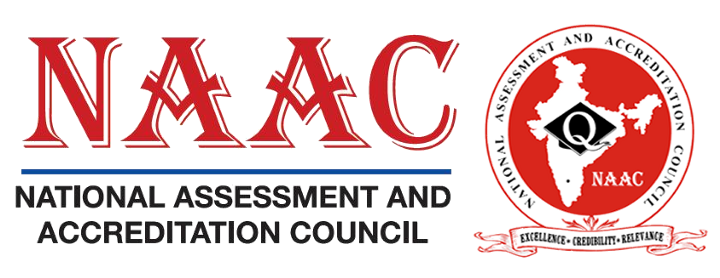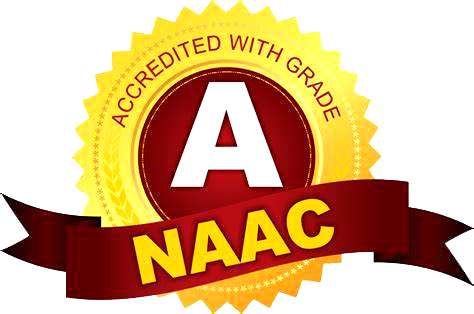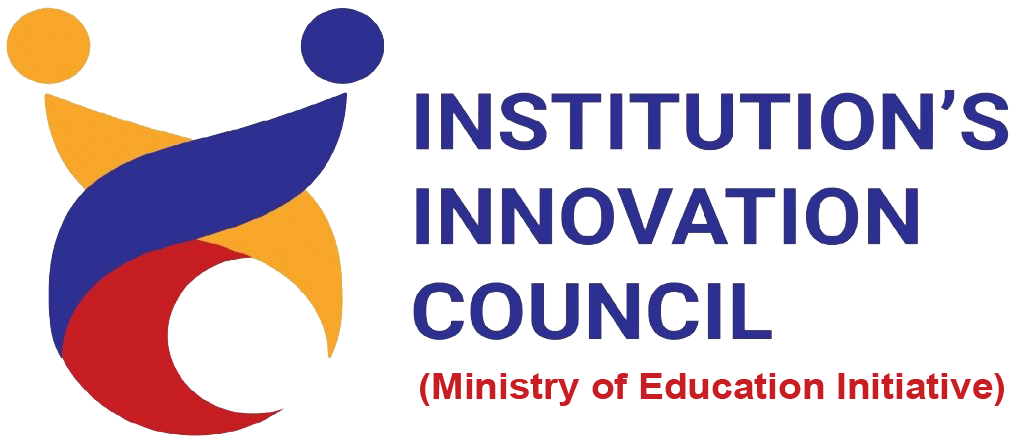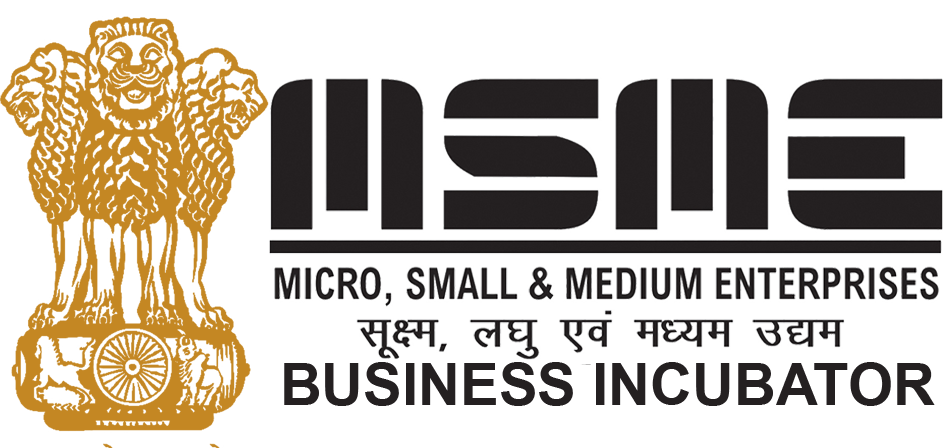
DVV - CLARIFICATION
Extended Profile
| Metric No. | Descriptions | View/Download |
|---|---|---|
| 1.1 | Number of students year wise during the last five years | |
| 2.1 & 2.2 | Number of full time teachers during the last five years (Without repeat count) | |
| 3.1 | Expenditure excluding salary component year wise during the last five years. |
Criterion 1 – Curricular Aspects
| Metric No. | Type | Descriptions | View/Download |
|---|---|---|---|
| 1.1 | Curricular Planning and Implementation | ||
| 1.2.1 | QnM | Number of Certificate/Value added courses offered and online courses of MOOCs, SWAYAM, NPTEL etc. where the students of the institution have enrolled and successfully completed during the last five years
1.2.1.1. Number of Certificate/Value added courses offered and online courses of MOOCs, SWAYAM, NPTEL etc. where the students of the institution have enrolled and successfully completed during the last five years |
|
| 1.2.2 | QnM | Percentage of students enrolled in Certificate/ Value added courses and also completed online courses of MOOCs, SWAYAM, NPTEL etc.
as against the total number of students during the last five years
1.2.2.1. Number of students enrolled in Certificate/ Value added courses and also completed online courses of MOOCs, SWAYAM, NPTEL etc. as against the total number of students during the last five years |
|
| 1.3 | Curriculum Enrichment | 1.3.2 | QnM | Percentage of students undertaking project work/field work/ internships (Data for the latest completed academic year)
1.3.2.1. Number of students undertaking project work / field work / internships (2022-23) |
| 1.4 | Feedback System | ||
| 1.4.1 | QnM | Institution obtains feedback on the academic performance and ambience of the institution from various stakeholders, such as Students, Teachers, Employers, Alumni etc. and action taken report on the feedback is made available on institutional website |
Criteria 2- Teaching- Learning and Evaluation (350)
| Metric No. | Type | Descriptions | View/Download |
|---|---|---|---|
| 2.1 | Student Enrolment and Profile | ||
| 2.1.1 | QnM | Enrolment percentage | 2.1.2 | QnM | Percentage of seats filled against reserved categories (SC, ST, OBC etc.) as per applicable reservation policy for the first year admission during the last five years |
| 2.2 | Student Teacher Ratio | ||
| 2.2.1 | QnM | Student – Full time Teacher Ratio | |
| 2.4 | Teacher Profile and Quality | ||
| 2.4.1 | QnM | Percentage of full-time teachers against sanctioned posts during the last five years | |
| 2.4.2 | QnM | Percentage of full time teachers with NET/SET/SLET/ Ph. D./D.Sc. / D.Litt./L.L.D. during the last five years (consider only highest degree for count) | |
| 2.6 | Student Performance and Learning Outcome | ||
| 2.6.3 | QnM | Pass percentage of Students during last five years (excluding backlog students) |
Criteria 3- Research, Innovations and Extension (110)
| Metric No. | Type | Descriptions | View/Download |
|---|---|---|---|
| 3.1 | Resource Mobilization for Research | ||
| 3.1.1 | QnM | Grants received from Government and non-governmental agencies for research projects / endowments in the institution during the last five years | |
| 3.2 | Innovation Ecosystem | ||
| 3.2.2 | QnM | Number of workshops/seminars/conferences including programs conducted on Research Methodology, Intellectual Property Rights (IPR) and entrepreneurship during the last five years | |
| 3.3 | Research Publication and Awards | ||
| 3.3.1 | QnM | Number of research papers published per teacher in the Journals as notified on UGC CARE list during the last five years | |
| 3.3.2 | QnM | Number of books and chapters in edited volumes/books published and papers published in national/ international conference proceedings per teacher during last five years | |
| 3.4 | Extension Activities | ||
| 3.4.3 | QnM | Number of extension and outreach programs conducted by the institution through organized forums including NSS/NCC with involvement of community during the last five years | |
| 3.5 | Collaboration | ||
| 3.5.1 | QnM | Number of functional MoUs/linkages with institutions/ industries in India and abroad for internship, on-the-job training, project work, student / faculty exchange and collaborative research during the last five years |
Criterion 4 - Infrastructure and Learning Resources (100)
| Metric No. | Type | Descriptions | View/Download |
|---|---|---|---|
| 4.1 | Physical Facilities | ||
| 4.1.2 | QnM | Percentage of expenditure for infrastructure development and augmentation excluding salary during the last five years | |
| 4.3 | IT Infrastructure | ||
| 4.3.2 | QnM | Student – Computer ratio (Data for the latest completed academic year) | |
| 4.4 | Maintenance of Campus Infrastructure | ||
| 4.4.1 | QnM | Percentage expenditure incurred on maintenance of physical facilities and academic support facilities excluding salary component, during the last five years |
Criterion 5 - Student Support and Progression (140)
| Metric No. | Type | Descriptions | View/Download |
|---|---|---|---|
| 5.1 | Student Support | ||
| 5.1.1 | QnM | Percentage of students benefited by scholarships and freeships provided by the institution, government and non-government bodies, industries, individuals, philanthropists during the last five years | |
| 5.1.2 | QnM | Following capacity development and skills enhancement activities are organised for improving students’ capability 1. Soft skills 2. Language and communication skills 3. Life skills (Yoga, physical fitness, health and hygiene, self-employment and entrepreneurial skills) 4. Awareness of trends in technology |
|
| 5.1.3 | QnM | Percentage of students benefitted by guidance for competitive examinations and career counseling offered by the Institution during the last five years | |
| 5.1.4 | QnM | The institution adopts the following for redressal of student grievances including sexual harassment and ragging cases 1. Implementation of guidelines of statutory/regulatory bodies 2. Organisation wide awareness and undertakings on policies with zero tolerance 3. Mechanisms for submission of online/offline students’ grievances 4. Timely redressal of the grievances through appropriate committees |
|
| 5.2 | Student Progression | ||
| 5.2.1 | QnM | Percentage of placement of outgoing students and students progressing to higher education during the last five years | |
| 5.2.2 | QnM | Percentage of students qualifying in state/national/ international level examinations during the last five years | |
| 5.3 | Student Participation and Activities | ||
| 5.3.1 | QnM | Number of awards/medals for outstanding performance in sports/ cultural activities at University / state/ national / international level during the last five years | |
| 5.3.2 | QnM | Average number of sports and cultural programs in which students of the Institution participated during last five years |
Criterion 6 - Governance, Leadership and Management (100)
| Metric No. | Type | Descriptions | View/Download |
|---|---|---|---|
| 6.2 | Strategy Development and Deployment | ||
| 6.2.2 | QnM | Institution implements e-governance in its operations 1. Administration including complaint management 2. Finance and Accounts 3. Student Admission and Support 4. Examinations |
|
| 6.3 | Faculty Empowerment Strategies | ||
| 6.3.2 | QnM | Percentage of teachers provided with financial support to attend conferences/workshops and towards membership fee of professional bodies during the last five years | |
| 6.3.3 | QnM | Percentage of teaching and non-teaching staff participating in Faculty development Programmes (FDP), Management Development Programmes (MDPs) professional development /administrative training programs during the last five years | |
| 6.5 | Internal Quality Assurance System | ||
| 6.5.2 | QnM | Quality assurance initiatives of the institution include: 1. Regular meeting of Internal Quality Assurance Cell (IQAC); quality improvement initiatives identified and implemented 2. Academic and Administrative Audit (AAA) and follow-up action taken 3. Collaborative quality initiatives with other institution(s) 4. Participation in NIRF and other recognized rankings 5. Any other quality audit/accreditation recognized by state, national or international agencies such as NAAC, NBA etc. |
Criterion 7 - Institutional Values and Best Practices
| Metric No. | Type | Descriptions | View/Download |
|---|---|---|---|
| 7.1 | Institutional Values and Social Responsibilities | ||
| 7.1.2 | QnM | The Institution has facilities and initiatives for: 1. Alternate sources of energy and energy conservation measures 2. Management of the various types of degradable and non-degradable waste 3. Water conservation 4. Green campus initiatives 5. Disabled-friendly, barrier free environment |
|
| 7.1.3 | QnM | Quality audits on environment and energy regularly undertaken by the Institution. The institutional environment and energy initiatives are confirmed through the following: 1. Green audit / Environment audit 2. Energy audit 3. Clean and green campus initiatives 4. Beyond the campus environmental promotion and sustainability activities |





